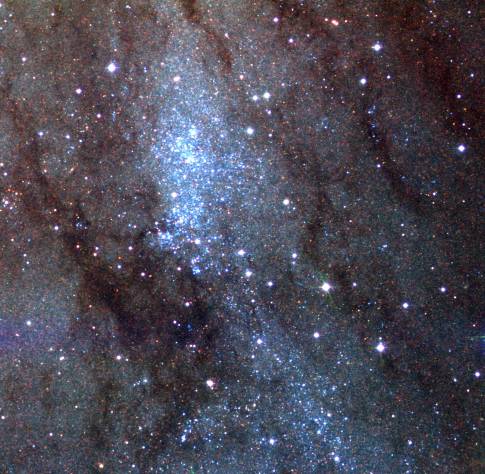
|
Explanation: Nestled within the dusty arms of the large spiral galaxy Andromeda (M31), the star cluster NGC 206 is one of the largest star forming regions known in our local group of galaxies. The beautiful bright blue stars of NGC 206 betray its youth - but close, systematic studies of variable stars in and around NGC 206 will also accurately reveal its distance. Astronomers are searching for variable stars in NGC 206, particularly pulsating stars known as Cepheids and eclipsing binary star systems. Distances for these types of stars can be effectively determined by following the periodic changes in their brightness and spectra. About 3 million light-years away, an accurately known distance to NGC 206 and thus M31 is critical to the larger understanding of galaxy formation, galaxy evolution, and ultimately the distance scale of the Universe.
|
January February March April May June July August September October November December |
| ||||||||||||||||||||||||||||||||||||||||||||||||
NASA Web Site Statements, Warnings, and Disclaimers
NASA Official: Jay Norris. Specific rights apply.
A service of: LHEA at NASA / GSFC
& Michigan Tech. U.
Based on Astronomy Picture
Of the Day
Publications with keywords: star cluster - cepheid - distance scale - star - M 31
Publications with words: star cluster - cepheid - distance scale - star - M 31
See also:
- Hubble s Andromeda Galaxy Mosaic
- NGC 206 and the Star Clouds of Andromeda
- Young Star Cluster NGC 1333
- APOD: 2024 September 8 Á M31: The Andromeda Galaxy
- APOD: 2024 June 16 Á Animation: Black Hole Destroys Star
- APOD: 2024 January 15 Á Star Cluster IC 348 from Webb
- APOD: 2023 December 10 Á Big Dipper over Pyramid Mountain
